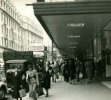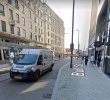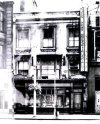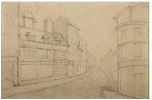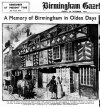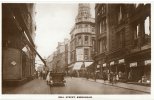-
Welcome to this forum . We are a worldwide group with a common interest in Birmingham and its history. While here, please follow a few simple rules. We ask that you respect other members, thank those who have helped you and please keep your contributions on-topic with the thread.
We do hope you enjoy your visit. BHF Admin Team
You are using an out of date browser. It may not display this or other websites correctly.
You should upgrade or use an alternative browser.
You should upgrade or use an alternative browser.
Bull Street
- Thread starter Astoness
- Start date
BrummieGeoff
Sparkhill Lad
Interesting cutting Viv.This describes improvements in Bull Street and the Minories, with references to much older history.
Source: Birmingham Daily Post, 1/12/1897, British Newspaper Archive
Viv
View attachment 172903
View attachment 172902
Here are photos of the Berrill and Wilson shops mentioned ....
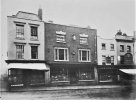
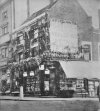
Radiorails
master brummie
Interesting photographs. The Birmingham Shirt warehouse and the Phoenix Fire Insurance office above Adkins shop.
I can't make out what the hanging item is high up on George Berrill's place is. It has the appearance of a bell as I do not see any loophole there.
I can't make out what the hanging item is high up on George Berrill's place is. It has the appearance of a bell as I do not see any loophole there.
Thanks Geoff. The second photo of Wilson's books building seems to be adorned with flowers and plants. Must have been quite striking. Even the Newbury's sign on the side of the building is framed with flowers.
These are two images which I struggle to place in relation to today's buildings. As with so many images of old Bull Street it's difficult to imagine it once looked like this.
Viv.
These are two images which I struggle to place in relation to today's buildings. As with so many images of old Bull Street it's difficult to imagine it once looked like this.
Viv.
MWS
from Bham
Thanks Geoff. The second photo of Wilson's books building seems to be adorned with flowers and plants. Must have been quite striking. Even the Newbury's sign on the side of the building is framed with flowers.
These are two images which I struggle to place in relation to today's buildings. As with so many images of old Bull Street it's difficult to imagine it once looked like this.
Viv.
On the 1891 census there is a James Wilson bookseller listed at 35 Bull St. This is listed next to the Minories and then going the other way you come to the Friends Meeting House which I think would put it on the corner with pink dot below.
I can see the no 135 on the photo so might not be the right one though.
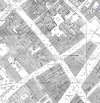
Very helpful. Now got it ! Thanks. Viv.
Jayell
master brummie
The building on the far left of Brummie Geoff's post #362 was 34 Bull Street, which stood on the corner of what is the Minories. This shop was occupied by my 4 x Gt.Grandfather, James Stephens, who had a Boot & Shoe Maker's shop. He was there from at least 1809 until about 1829, before he moved eventually to 62 Constitution Hill.
What a fascinating thread.
A number of my Allday family had shops on Bull Street in the early-to-mid 1800s, so I've been trawling the various posted maps, snippets and photos to see what I can learn about their location. Thanks to everyone who has contributed!
My 4 x great grandfather, John Allday, had his wire-working workshop and showrooms at number 30 from 1821 to around 1830, where he sold fenders, fireguards and the like. If the street numbers haven't changed, its location is shown in post #342, though whether it's the same building as in the 1820s, I don't know. I guess that plot would be under the south side of the Lewis building now, perhaps where the Wetherspoons is.
John's brother Joseph was his partner at number 30 until 1826, before they fell out and Joseph set up his own workshop at Dale End. Joseph later opened a shop at 51 Bull Street, near the Snow Hill end, in 1838, specialising in gauze window blinds. That venture seems to have lasted little over a year before getting into financial trouble, and Joseph soon had to relaunch the business after relocating to Union Street.
The eldest Allday brother, William, had a butcher's shop at number 39 from 1814. William handed over the shop to younger brother Thomas in 1833, who ran it until around 1838. I imagine this must be located the other side of the Minories, where the north side of the Lewis building is and towards the Meeting House.
Thomas Allday returned to Bull Street in 1844, and ran a butcher's at number 22 until 1864. Earlier in his career, before taking over Willliam's shop, Thomas had his own premises at the Crooked Lane end of Bull Street, initially at number 99 in 1820, but by 1823 was based at number 108, where he stayed until 1829/30.
This, I gather from the thread, would be the middle section of the Lamb House, next door to John Suffield snr. Number 108 was still a butcher's shop in 1835, having been taken over by George Pole. It must have passed to the Suffields not long after that. Appropriately enough, Thomas seems to have had a speciality in his 'house lamb', bred and raised at his farm at Acocks Green. I don't know when the name "Lamb House" first appears, but perhaps Thomas was carrying on an established tradition.
A number of my Allday family had shops on Bull Street in the early-to-mid 1800s, so I've been trawling the various posted maps, snippets and photos to see what I can learn about their location. Thanks to everyone who has contributed!
My 4 x great grandfather, John Allday, had his wire-working workshop and showrooms at number 30 from 1821 to around 1830, where he sold fenders, fireguards and the like. If the street numbers haven't changed, its location is shown in post #342, though whether it's the same building as in the 1820s, I don't know. I guess that plot would be under the south side of the Lewis building now, perhaps where the Wetherspoons is.
John's brother Joseph was his partner at number 30 until 1826, before they fell out and Joseph set up his own workshop at Dale End. Joseph later opened a shop at 51 Bull Street, near the Snow Hill end, in 1838, specialising in gauze window blinds. That venture seems to have lasted little over a year before getting into financial trouble, and Joseph soon had to relaunch the business after relocating to Union Street.
The eldest Allday brother, William, had a butcher's shop at number 39 from 1814. William handed over the shop to younger brother Thomas in 1833, who ran it until around 1838. I imagine this must be located the other side of the Minories, where the north side of the Lewis building is and towards the Meeting House.
Thomas Allday returned to Bull Street in 1844, and ran a butcher's at number 22 until 1864. Earlier in his career, before taking over Willliam's shop, Thomas had his own premises at the Crooked Lane end of Bull Street, initially at number 99 in 1820, but by 1823 was based at number 108, where he stayed until 1829/30.
This, I gather from the thread, would be the middle section of the Lamb House, next door to John Suffield snr. Number 108 was still a butcher's shop in 1835, having been taken over by George Pole. It must have passed to the Suffields not long after that. Appropriately enough, Thomas seems to have had a speciality in his 'house lamb', bred and raised at his farm at Acocks Green. I don't know when the name "Lamb House" first appears, but perhaps Thomas was carrying on an established tradition.
I remember the neon stocking lights advertising hosiery like the one over the J T Modes entrance. Several shops had them.
Remember how the word "Modes" was frequently used in the 1950s and 60s ? I think it was an indicator that the shop was up with the current fashions (using the French word with France being respected for its fashion and style).
That fur shop would have had its glass windows broken and daubed with red paint today.
From memory I think True-Form was one of less expensive shoe shops but also up with the modern fashions.
Barrows looks inviting - seems they had a cafe inside too.
Viv.
Remember how the word "Modes" was frequently used in the 1950s and 60s ? I think it was an indicator that the shop was up with the current fashions (using the French word with France being respected for its fashion and style).
That fur shop would have had its glass windows broken and daubed with red paint today.
From memory I think True-Form was one of less expensive shoe shops but also up with the modern fashions.
Barrows looks inviting - seems they had a cafe inside too.
Viv.
maybe the forerunner to todays jeggings vivJust couldn't resist having a look at J T Modes stock. What on earth are/were 'jiggers' ? Didn't realise drainpipe slacks applied to womens trousers as well as mens. Viv.
View attachment 182386
Source: British Newspaper Archive
That's made feel sick Mike ! V
A Sparks
master brummie
Looks like Jiggers were coats - from this 1950's children's clothes page...

History World - Fashion - Smart Jigger Coat
Britain's History in Old Photos, Vintage Adverts and more
www.historyworld.co.uk

I like the coat. I bet it was 'scratchy' wool though ! Would go nice with drainpipe slacks. Viv.
mw0njm.
A Brummie Dude
i think it should read joggers not jiggersJust couldn't resist having a look at J T Modes stock. What on earth are/were 'jiggers' ? Didn't realise drainpipe slacks applied to womens trousers as well as mens. Viv.
View attachment 182386
Source: British Newspaper Archive

Last edited:
That's the Lamb House again, isn't it?
In 1835 it would have been George Pole's butcher's shop in the middle, with John Suffield snr to the right, I think.
Viv's shared photo from earlier in the thread shows a still recognisable view from some 50 years later:
Ed
In 1835 it would have been George Pole's butcher's shop in the middle, with John Suffield snr to the right, I think.
Viv's shared photo from earlier in the thread shows a still recognisable view from some 50 years later:
This 1886 photo taken from High Street adds a little more to Stitchers earlier photo in post # 22. It shows Lamb House/Suffields on the left corner. The building (Reece tobacconist etc) to the right must be where Matineau Sq now stands. Looks like it was a key shopping area at the time. Viv.
View attachment 73256
Ed
Back in June, I paid a visit to the library to look at some archive documents relating to my Allday family. These included some lovely old wax-sealed parchments containing the deeds for the Swan Tavern, on its sale to my 5 x great uncle William Allday in 1815. After some assistance from the archivist to coax the document open, I discovered a nice little sketch on its reverse showing a plan of the property and its immediate surroundings. It seems the Unpublished Works 2039 rule says I can't share the sketch itself here, sadly, but I thought a description might still be of interest.
The Swan Tavern and its associated brewhouse stood on the north-west corner of Bull Street and Temple Row (where A-Plan Insurance is today), with a frontage of 8 yards on Bull Street and 15 yards on Temple Row. Adjoining the tavern on Bull Street was Miss Evans, Confectioner.
On Temple Row, a passage led between the rear of the tavern and a shallow building labelled "Weldon" to the tavern's yard behind the Weldon premises, with a privy and shared access to a water pump. Beyond the yard and water pump is sketched the corner of "Mr Hodges Buildings". Further along Temple Row, beyond the Weldon premises, are "Land and Buildings belonging to Different Proprietors", not sketched, but listed from Weldon to what I think is St Philips Passage, as follows:
Ed
The Swan Tavern and its associated brewhouse stood on the north-west corner of Bull Street and Temple Row (where A-Plan Insurance is today), with a frontage of 8 yards on Bull Street and 15 yards on Temple Row. Adjoining the tavern on Bull Street was Miss Evans, Confectioner.
On Temple Row, a passage led between the rear of the tavern and a shallow building labelled "Weldon" to the tavern's yard behind the Weldon premises, with a privy and shared access to a water pump. Beyond the yard and water pump is sketched the corner of "Mr Hodges Buildings". Further along Temple Row, beyond the Weldon premises, are "Land and Buildings belonging to Different Proprietors", not sketched, but listed from Weldon to what I think is St Philips Passage, as follows:
- Smith, Shoemaker
- Taylor, Hosier
- Tutins Hat Warehouse
- Miss Juxons, Child Bed Linen
- Messrs Handleys Warehouse
- Freeman, Confectioner
Ed
Very interesting. In particular, for me, your mention of Weldon probably solves the position of a warehouse belonging to Mr Hickman in post 5 on https://birminghamhistory.co.uk/for...w-demolished-in-temple-row.55739/#post-776116, it not being the one you refer to
Checking my notes on the deeds there's certainly no mention of a Mr Hickman in the Swan Tavern transactions. Of the other warehouses on that St Phillips side of Temple Row, Tutin's appears likely to belong to Samuel Tutin (1739-1815), Hatter and Hosier, of Bull Street, while the Messrs Handley are Joseph and William, Bridle Makers (the Handleys are sold a part the Swan Tavern yard in 1815 when the rest of the property goes to William Allday). The only local Weldon I can find in the 1815 directories is Frances Weldon, Butter and Cheese Factor, of Dale End.Very interesting. In particular, for me, your mention of Weldon probably solves the position of a warehouse belonging to Mr Hickman in post 5 on https://birminghamhistory.co.uk/for...w-demolished-in-temple-row.55739/#post-776116, it not being the one you refer to
The Swan Tavern deeds are document ref MS 199/1-11, with the sketch appearing in MS 199/2 should anyone wish to peruse them further.
Last edited:

